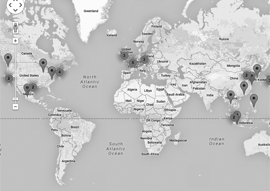Why do many supply chain planning organizations gamble on planning “heroes” to fix ongoing supply chain crises?
In our experience, it’s an extremely risky, unsustainable practice. These hard-core, dedicated individuals are the stars in an environment of continuous chaos resolving stressful issues through hard effort and tenacity. Over time, and through attrition, this approach leads to more vulnerabilities in the process, with disruptions resulting in delays, increased costs, customer dissatisfaction, and employee burnout.
Does Your Supply Chain Planning Depend More on Luck Than Skill?
This article explores why a well-functioning supply chain provides THE best foundation for any successful business. From sourcing raw materials to delivering finished products to customers, thoughtful, end-to-end supply chains play a crucial role in ensuring the smooth flow of goods and services. However, in an increasingly complex and uncertain world, developing a more deliberative supply chain planning process that can achieve actual resilience to volatile market forces is a much better bet than surviving on blind luck or internal planning saviors (see sidebar) to rescue your organization from daily operational chaos and lost revenue.
“Chance favors the prepared mind.” —Louis Pasteur
On paper, most agree that supply chain planning should never rely on hope as a strategy. Why, then, do many businesses trust in “lucky” supply chains? These constrained, inflexible systems are consistently exposed to external risks, but somehow manage to weather unexpected events with age-old practices. This lucky streak, however, may be over for overextended organizations. Natural disasters, geopolitical tensions, pandemics, and other unexpected disruptions are currently severely impacting the efficiency and reliability of these static supply chains. With each new disruption, the law of diminishing returns comes to play, and without thoughtful intervention, chaos always wins.
One of today’s more urgent business challenges involves helping enterprises develop more resilient, agile supply chain processes that 1) remove risks and obstructions; 2) unlock new opportunities for growth; and 3) provide a bulwark against the hostage-to-fortune syndrome. The first step in this effort requires recognizing key disruptors and risk factors involved, including but not limited to the following:
- Geographic Location Risks: The physical location of suppliers, manufacturers, and distribution centers can impact a supply chain’s vulnerability to natural disasters, political instability, and transportation disruptions.
- Poor Supplier Relationships: Sourcing raw materials and semi-finished goods from a single supplier can leave you vulnerable in the event of an issue with that supplier. If a supplier goes down, it can take a significant amount of time to qualify a new one.
- Low Technology and Data: The use of spreadsheets and a cobbled-together technical infrastructure can lead to slow coalition, timeliness, and erroneous data issues, if not complete loss of data.
- Poor Inventory Management: Poorly management inventory translates to increased carrying costs when demand unexpectedly drops, while understocking can result in stockouts during sudden peak periods of demand.
- Transport and Logistics Risks: Relying on single modes of transportation or sole-sourcing carriers can result in customers not receiving product due to transportation lane- or carrier-specific issues.
- Lack of Contingency Planning: The lack of proactively planning for contingencies can leave you little time to develop what-if scenarios and solutions when issues occur.
How to Build and Sustain Better Supply Chain Resilience and Longevity:
The good news is that well-established organizations are now embracing more proactive enhancements to their supply chain planning processes in an attempt to attain the holy grail of resilience and agility while mitigating serious risks. These policies, procedures, and methodologies have been recognized as best practices for decades. Even better, advances in technology are proving to be game changers in enabling assimilation and transparency into our clients’ planning workflows. Key steps in supply chain process transformation involve the following:
- Risk Assessment: Proactively identify potential vulnerabilities in your supply chain through a comprehensive risk assessment. This involves mapping the entire supply chain network and evaluating the impact of potential disruptions. Attempt to anticipate potential risks before they happen.
- Diversification: Avoid relying on a single supplier or location. Diversify suppliers, manufacturing sites, and distribution channels to spread risk and increase flexibility. Although not always possible or practical, diversifying the supply chain network across multiple regions can reduce the impact of a single adverse event. Understanding the potential risks can help to identify secondary sourcing locations, minimizing the impact of a geographically related disruption.
- Collaboration: Foster strong partnerships with suppliers, customers, and other stakeholders. to create a more collaborative, resilient supply chain during challenging times. Develop robust supplier management programs that regularly evaluate their performance and proactively identify potential risks. Transparent communication and mutual support can lead to faster recovery and better risk management.
- Technology Adoption: Utilizing advanced technologies such as AI, machine learning, and data analytics to forecast potential risks can help businesses gain real-time predictive insights into their supply chain operations. More data-driven approaches enable proactive decision-making and risk identification and can automate certain processes for improved efficiency.
- Inventory Optimization: Employ data-driven inventory management techniques to strike the right balance between holding costs and the ability to meet demand during business as usual, as well as disruptions. Maintaining an optimal level of inventory is essential for mitigating supply chain disruptions.
- Scenario Planning: Developing a contingency plan that includes suppliers, customers and internal stakeholders is a great way to ensure your supply chain remains intact in the event of an unexpected disruption, be it natural or man-made. These plans should proactively outline response protocols and alternative courses of action to be implemented when disruptions occur. Conduct regular drills and simulations to test the effectiveness of these plans.
- Sales and Operations Planning (S&OP): An S&OP process can bring all organizations together to successfully achieve corporate objectives and financial goals. The focus on a longer-term planning horizon provides insight into identifying potential issues and a runway long enough to mitigate or eliminate them.
Rather than relying on outdated practices or the heroics of overstretched staff, organizations that invest in mindful, proactive, and predictive planning to improve resilience and agility are better prepared to navigate and thrive through challenging times. To ensure success in any supply chain improvement effort, we also recommend due-diligence research and a thorough risk assessment to uncover specific factors impacting an enterprise’s unique supply and demand needs.



